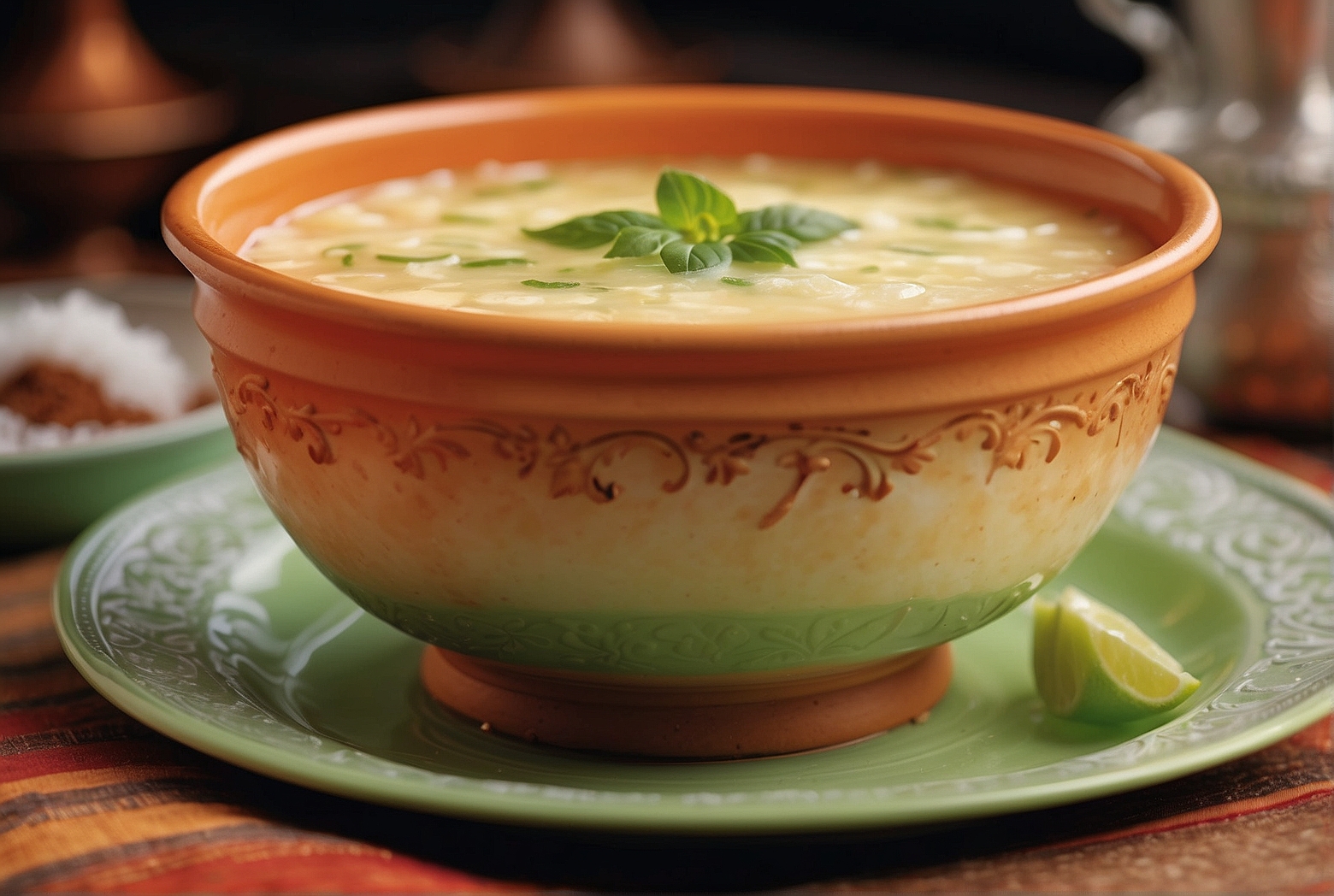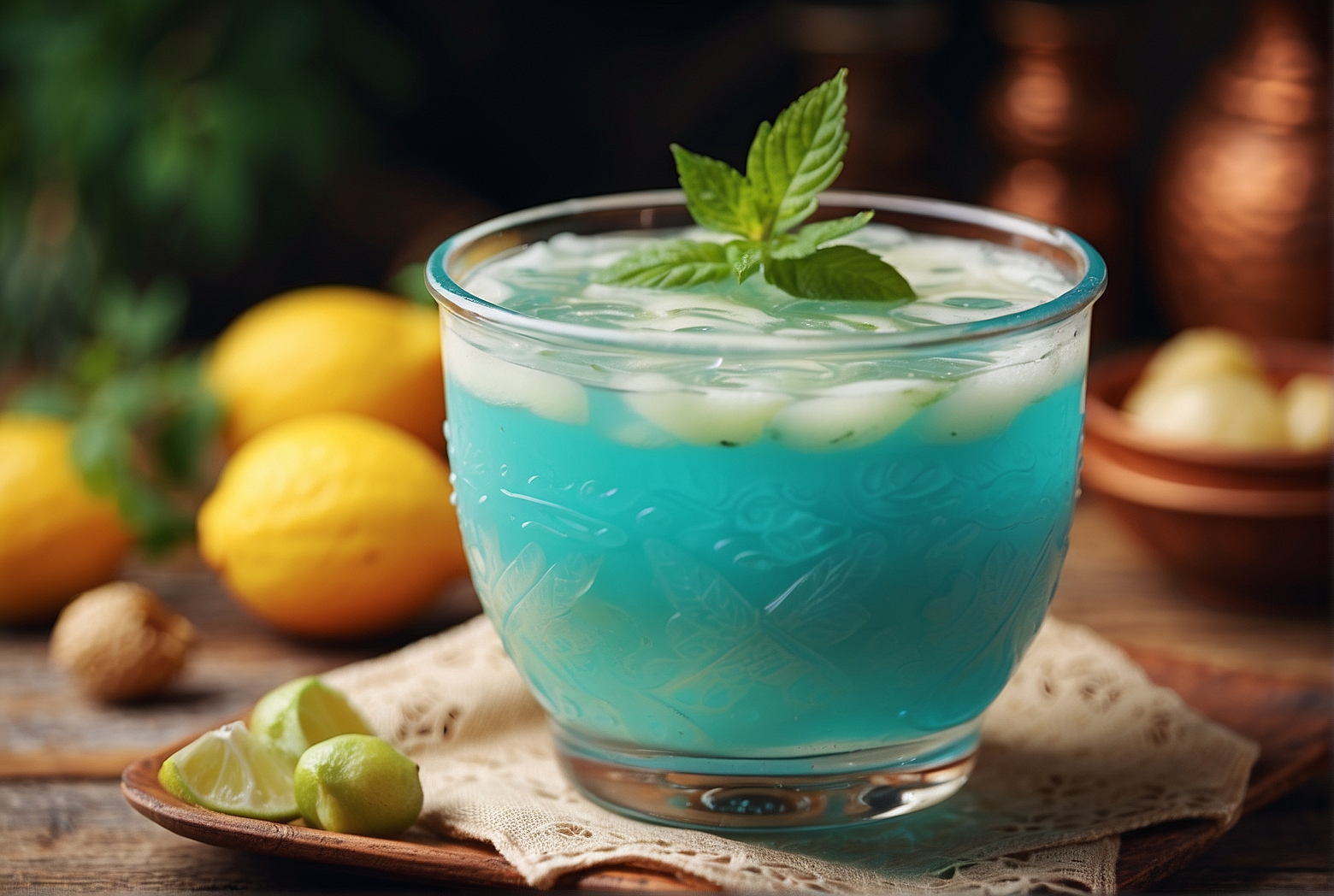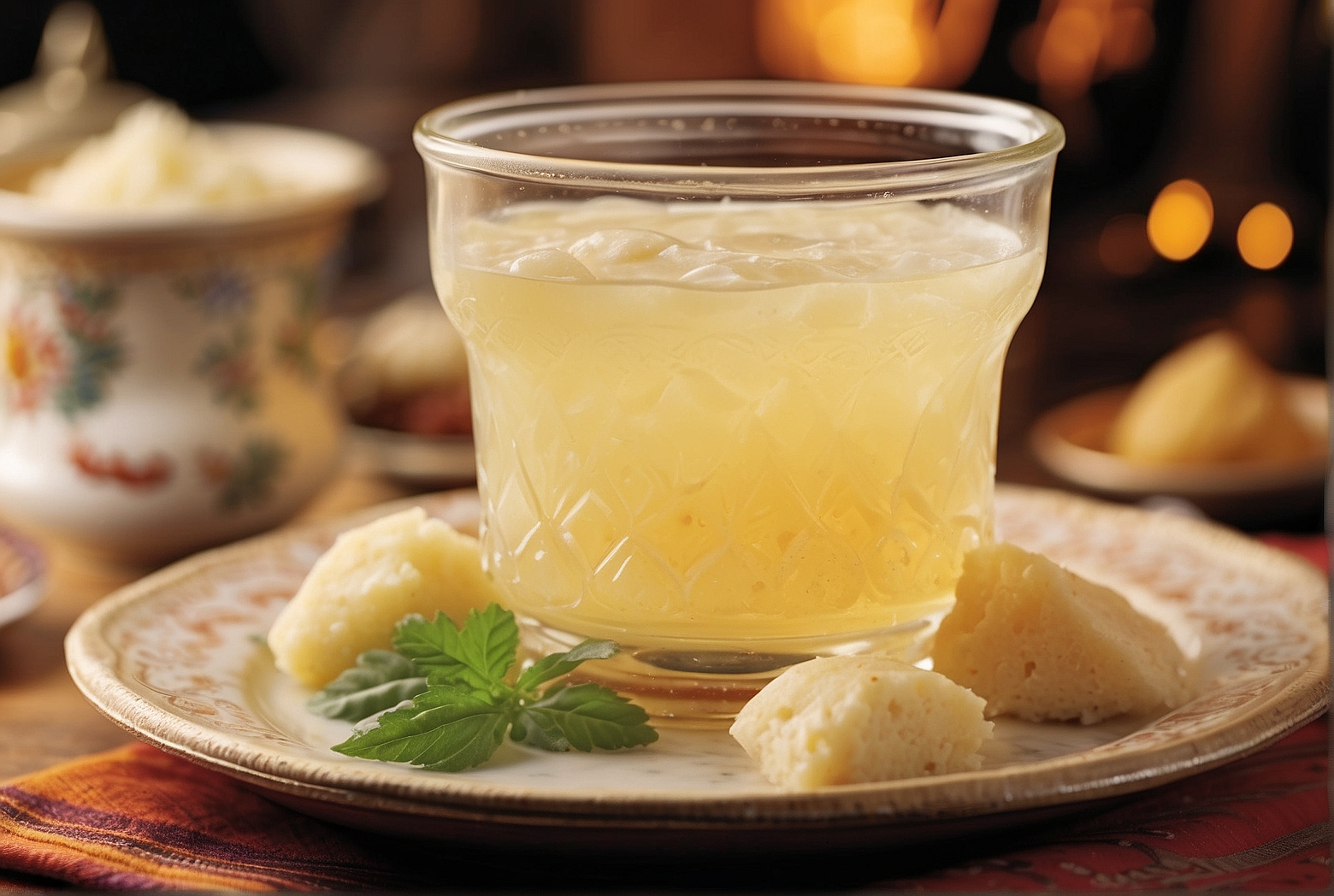If you’re a fan of Brazilian cuisine or simply looking to explore new flavors, then you’re in for a treat with this article. Get ready to indulge your taste buds with a classic Canjica recipe steeped in tradition and culture. This delightful Brazilian dish will transport you to the heart of Brazil, filled with mouthwatering ingredients and warm, comforting flavors. From the first spoonful to the last, this recipe is sure to leave you craving more. So, grab your apron and prepare to embark on a culinary adventure as we guide you through the steps of creating this delicious and authentic Canjica dish.
Ingredients
To make a delicious canjica, you will need the following ingredients:
Yellow dry corn
The main ingredient in canjica is yellow dry corn. It is important to use this specific type of corn to achieve the traditional flavor and texture of the dish.
Water
Water is necessary to soak and cook the corn. Make sure to use enough water to fully submerge the corn during soaking and to cook it properly.
Whole milk
Whole milk is a key ingredient in canjica, as it adds richness and creaminess to the dish. It is important to use whole milk rather than skim or low-fat milk to achieve the desired taste and consistency.
Sugar
Canjica is sweetened with sugar to balance out the natural flavors of the corn. You can adjust the amount of sugar according to your taste preferences.

Cinnamon sticks
Cinnamon sticks add a warm and fragrant flavor to canjica. They are a traditional spice used in this recipe.
Cloves
Cloves are another spice that enhances the flavor of canjica. They add a subtle hint of spiciness and depth to the dish.
Condensed milk
Condensed milk is a popular ingredient in Brazilian cuisine, and it is commonly added to canjica for additional sweetness and creaminess. It adds a luscious texture to the dish.
Salt
A pinch of salt is necessary to balance out the sweetness of the canjica. It helps to bring out the flavors of the other ingredients.
Preparation
To make canjica, follow these steps:
Soaking the corn
Start by soaking the yellow dry corn in water overnight. This step softens the corn and reduces the cooking time.

Boiling the corn
Drain the soaked corn and transfer it to a large pot. Add enough water to fully cover the corn, and bring it to a boil. Cook the corn until it is tender and easily pierced with a fork.
Draining the corn
Once the corn is cooked, drain it and set it aside. Make sure to reserve some of the cooking liquid, as you may need it later to adjust the consistency of the canjica.
Cooking the corn
Return the drained corn to the pot and add the whole milk. Bring the mixture to a simmer, stirring occasionally to prevent the milk from scorching. Cook until the corn is soft and the mixture thickens.
Adding milk
If needed, you can add more milk to achieve the desired consistency of the canjica. This will depend on personal preference, as some people prefer a thicker texture while others prefer a more soupy consistency.
Sweetening the canjica
Add sugar to the pot and stir well to dissolve. Start with a smaller amount of sugar and adjust to taste. Remember that you can always add more later if needed.
Adding spices
Place cinnamon sticks and cloves into the pot of canjica. These spices will infuse the dish with their flavors as it simmers.
Simmering the canjica
Allow the canjica to simmer on low heat for about 30 minutes, stirring occasionally to prevent sticking. This will allow the flavors to meld together and the spices to infuse into the dish.
Serving the canjica
Once the canjica is cooked to your desired consistency, remove the cinnamon sticks and cloves. Serve the canjica warm, either in bowls or individual cups. For an extra touch, drizzle some condensed milk on top for added sweetness and creaminess.
Optional Variations
While the classic canjica recipe is delicious on its own, you can also try some optional variations to add extra flavors and textures to the dish. Here are a few ideas:
Coconut milk
Instead of or in addition to whole milk, you can use coconut milk to give your canjica a tropical twist. This adds a rich and creamy taste that complements the corn beautifully.
Peanuts
For a crunchy texture and nutty flavor, you can add peanuts to your canjica. Some people prefer to boil the peanuts with the corn, while others toast them and sprinkle them on top as a garnish.
Condensed milk topping
In addition to adding condensed milk to the canjica during the cooking process, you can also drizzle some on top as a final touch. This adds extra sweetness and creaminess to each spoonful.
Cinnamon powder
If you want a stronger cinnamon flavor, you can sprinkle some cinnamon powder on top of the canjica before serving. This adds a subtle spiciness and aroma to the dish.
Chocolate powder
For chocolate lovers, you can incorporate cocoa powder or chocolate syrup into the canjica. This creates a unique and decadent twist on the traditional recipe.
Feel free to experiment with these variations and adapt the recipe to your tastes and preferences. Canjica is a versatile dish that can be customized to suit different flavor profiles.
Tips for Success
To ensure that your canjica turns out perfectly, here are some helpful tips:
Choosing the right corn
When selecting yellow dry corn for canjica, make sure it is of good quality and free from any signs of moisture or mold. This ensures that the corn will cook properly and have the desired taste and texture.
Adjusting sweetness
The amount of sugar in canjica can be adjusted to suit your personal preference. Taste the dish as you add the sugar, starting with a smaller amount and adding more if needed. Remember that the corn and other ingredients will also contribute to the sweetness, so go easy on the sugar at first.
Consistency of canjica
The consistency of canjica can vary depending on personal preference. Some people prefer a thick and creamy texture, while others prefer a more soupy consistency. Adjust the amount of milk and cooking time accordingly to achieve the desired consistency.
Enhancing flavors
To enhance the flavors of your canjica, you can add a splash of vanilla extract or a dash of nutmeg. These additional spices add depth and complexity to the dish.
Serving suggestions
Canjica is traditionally served warm, especially during the colder months. You can enjoy it plain or garnish it with toasted coconut flakes, crushed peanuts, or a sprinkle of ground cinnamon for added texture and flavor.
History of Canjica
Origins in Brazil
Canjica is a traditional Brazilian dish that originated from the African influence in the country’s cuisine. It is believed to have been brought over by enslaved Africans and later adapted with local ingredients. It has since become a beloved dessert in Brazil, particularly during the winter months and during traditional festivals.
Historical significance
Canjica holds historical significance in Brazil as it is often associated with religious and cultural celebrations. It is commonly served during the Festa Junina, a festival held in honor of Saint John the Baptist, and during the Quermesse, a church fair. These festivities bring communities together and showcase the rich cultural heritage of Brazil.
Traditional celebrations
In addition to the Festa Junina and Quermesse, canjica is also a staple at other Brazilian celebrations, such as weddings, birthdays, and family gatherings. It is often served alongside other traditional dishes, creating a vibrant and diverse culinary experience.
Nutritional Information
Canjica is a hearty and satisfying dish, packed with nutrients. Here is the approximate nutritional information per serving:
Calories
Canjica typically contains around 300-400 calories per serving. The calorie content may vary depending on the specific ingredients used and portion size.
Carbohydrates
Canjica is a carbohydrate-rich dish, providing a good source of energy. It typically contains around 50-70 grams of carbohydrates per serving.
Protein
Canjica has a moderate protein content, with approximately 10-15 grams per serving. The protein comes from the corn, milk, and added toppings like peanuts.
Fat
The fat content in canjica varies depending on the type and amount of milk and additional ingredients used. It generally contains around 10-15 grams of fat per serving.
Dietary fiber
Canjica contains dietary fiber from the corn, which is beneficial for digestion. It typically provides around 2-4 grams of fiber per serving.
Vitamins and minerals
Canjica is a good source of vitamins and minerals, including calcium, potassium, vitamin B6, vitamin C, and iron. These nutrients contribute to overall health and well-being.
Canjica vs. Mungunzá
Differences in preparation
Canjica and mungunzá are often used interchangeably to refer to the same dish, but there are slight differences in their preparation. Canjica is typically made with yellow dry corn, while mungunzá is made with white corn.
Corn varieties used
Yellow dry corn is used in canjica, while white corn is used in mungunzá. The choice of corn variety can result in slight differences in taste and texture.
Regional variations
Canjica and mungunzá also have regional variations within Brazil. Different regions may have their own unique way of preparing and serving these dishes, incorporating local ingredients and flavors. Exploring these regional variations can be a delightful culinary adventure.
Similar Dishes from Around the World
Although canjica is a beloved Brazilian dish, similar desserts can be found in various cuisines around the world. Here are a few examples:
Arroz con Leche (Spain)
Arroz con Leche is a Spanish rice pudding made with rice, milk, sugar, and spices such as cinnamon and lemon zest. It is a delicious and comforting dessert enjoyed in many Spanish-speaking countries.
Rice Pudding (United Kingdom)
Rice pudding is a classic British dessert made with arborio rice, milk, sugar, and vanilla. It is often served with a dollop of fruit jam or a sprinkle of ground cinnamon.
Pudding Chômeur (Canada)
Pudding Chômeur is a traditional Canadian dessert made with a maple syrup sauce poured over a sponge cake. It is typically served warm and is a delightful treat during the winter months.
Kheer (India)
Kheer is a popular Indian rice pudding made with rice, milk, sugar, and flavored with cardamom, saffron, and nuts. It is often served chilled and garnished with pistachios or almonds.
Sago Gula Melaka (Malaysia)
Sago Gula Melaka is a Malaysian dessert made with sago pearls, palm sugar syrup, and coconut milk. It is a refreshing and sweet treat enjoyed throughout Malaysia.
Ma’aroukha (Morocco)
Ma’aroukha is a Moroccan dessert made with rice, milk, sugar, and orange blossom water. It is traditionally served cold and garnished with almonds or pistachios.
These desserts may have different names and variations, but they all share a common theme of using rice or corn as a base and incorporating milk, sugar, and spices for flavor. They showcase the diverse and delicious world of desserts from different cultures.
Canjica in Brazilian Cuisine
Popular traditional dishes
Canjica is just one example of the many delicious dishes found in Brazilian cuisine. Brazil has a rich culinary heritage influenced by its diverse population and abundant natural resources. Some other popular traditional dishes include feijoada, pão de queijo, acarajé, and brigadeiro.
Regional variations
Brazil is a large and diverse country, and the cuisine varies from region to region. Each region has its own unique flavors, ingredients, and cooking techniques. Canjica is no exception and can be prepared differently depending on the region. Exploring these regional variations allows you to discover the true depth and diversity of Brazilian cuisine.
Influence on Brazilian culture
Food plays an essential role in Brazilian culture, and dishes like canjica are deeply woven into the fabric of Brazilian society. They are often enjoyed during festive occasions, family gatherings, and traditional celebrations. Canjica, in particular, represents the fusion of African and Brazilian culinary traditions, showcasing the rich cultural heritage of the country.
Conclusion
Canjica is a classic Brazilian dessert that delights taste buds with its creamy texture, subtle spices, and natural sweetness. Whether enjoyed during traditional festivals or as a comforting winter treat, canjica holds a special place in Brazilian cuisine and culture. With its long history, regional variations, and nutritional benefits, canjica continues to be a beloved dish that brings people together and celebrates the vibrant flavors of Brazil. So grab a spoon and savor the delightful taste of canjica – a true symbol of Brazilian culinary heritage.
